> My stuff
> Books
 |
My books
 |
Kumar and Varna (eds.): Nation Branding: Concepts and Country
Perspectives. Hyderabad: ICFAI
University Press 2009.
Contributed a chapter, ‘Poised for Success: the Indian Brand
Prepares Itself for the 21st Century’, on how India, above many
other countries, has the right ideas for its nation brand. |
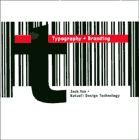 |
Yan: Typography
and Branding. Christchurch: Natcoll Publishing 2004.
Created with Natcoll in Christchurch, New Zealand. Finally published
in November 2004, with a lot of my 2002 material. Fortunately, the
ideas have stayed current, and there’s a lot of post-9-11 inspiration
inside this title.
|
 |
Yan: View Point Series 1 of 4: User Seductive—Perspectives
on 21st Century Branding. Wellington: Charlie Ward and Wai-te-Ata
Press, Victoria University of Wellington 2004.
This was a pleasure to work on. Charlie Ward is a talented young Irish
designer who came to me with a book proposal, with a series of four
books, each of which would be printed privately and in limited numbers.
I wrote the first; Kevin Roberts the second. Charlie (and Barbara
Schmelzer, and photographer Jono Rotman) has more than done the remainder
justice with a startlingly stunning work. Nominated for a Best Design
Award in New Zealand in 2004.
|
 |
Das (ed.): New
Age Branding: Concepts and Cases, Vol. 1. Hyderabad:
ICFAI University Press 2003.
I contributed one case to this marketing course book, ‘The
brand attitudes of automobiles’, which I originally wrote
for CAP in 2002. |
 |
Ind (ed.): Beyond
Branding: How the New Values of Transparency and Integrity Are Reshaping
the World of Brands. London: Kogan Page 2003.
Beyond Branding, to be published in autumn 2003, challenges
business to adapt to a world of transparency. My fellow authors and
I argue that business has to have a human perspective so that it benefits
people rather than manipulates. Visit the site at www.beyond-branding.com,
co-designed by me and developed by Johnnie Moore. The book went into
its second printing in 2004 and went paperback
in May 2005.
|
Academic articles
J. Yan: ‘Social media in branding: fulfilling a need’, presently
(January 2011) submitted to The Journal of Brand Management.
Approved for publication, I discuss how social media impact on
branding and brand equity.
J. Yan: ‘Branding and the international community’, The Journal
of Brand Management, vol. 10, no. 6, 2003, pp. 447–57.
The relevance of the international community and the shortcomings in the
nation branding of the United States.
J. Yan: ‘Corporate responsibility and the brands of tomorrow’, The
Journal of Brand Management, vol. 10, nos. 4–5, 2003, pp. 290–302.
Dealing with the future of corporate social responsibility.
J. Yan: ‘Online branding: an antipodean experience’, Human Society
and the Internet. Berlin: Springer-Verlag 2001.
From conference proceedings, a paper on how the digital divide is being
bridged and early success stories.
Related articles can be found at The
Journal of the Medinge Group.
Books I’ve been quoted or referenced in
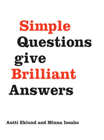 |
Eklund and Isoaho: Simple
Questions Give Brilliant Answers. Helsinki: SQBA 2010.
A wonderful book filled with quotations on leadership, including contributions
from yours truly. I was asked to contribute by my friend Prof Antti
Eklund, the acclaimed Finnish architect, designer and brand management
consultant. |
 |
Seib (ed.): New
Media and the New Middle East. New York: Palgrave Macmillan
2009.
My ‘Branding and the International Community’ paper for
the Journal of Brand Management was also cited in this volume
on new media. |
 |
Ip (ed.): The
Dragon and the Taniwha: Māori and Chinese in New Zealand.
Auckland: Auckland University Press 2009.
Briefly mentioned in relation to Māori intellectual property
rights. |
 |
Levy and Shastry: Happy
about Knowing What to Expect in 2009. Cupertino, Calif.: Happy
About 2009.
More predictions, though for now, this was my last contribution
to Happy about. |
 |
Hedinger and Vonderau (eds.): Films
that Work: Industrial Film and the Productivity of Media.
Amsterdam: Amsterdam University Press 2009.
One of my earlier papers on branding and the international community,
covering the reality of nation branding and politics after 9-11, cited.
|
 |
Jaffe and Nebenzahl:
Made
in …. Milano: Baldini Castoldi Dalai editore 2008.
A translated, Italian edition of Eugene and Israel’s book on
place branding and the country-of-origin effect, in which I am thanked.
|
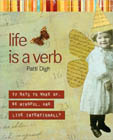 |
Digh: Life
Is a Verb: 37 Days to Wake Up, Be Mindful, and Live Intentionally.
Charlotte, NC: Skirt 2008.
I helped out my friend Patti Digh with a quotation for her book on
positive thinking. |
 |
Alba and Stay: I’m
on Facebook: Now What?. Cupertino, Calif.: Happy
About 2008.
Tips on how to get the most for your company through being on Facebook.
|
 |
Dinnie: Nation
Branding: Concepts, Issues, Practice. Oxford: Butterworth
Heinemann 2008.
It was very kind of Keith Dinnie to include my viewpoints on nation
branding in his definitive work on the subject. This is easily one
of the best books on nation branding out there. |
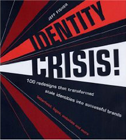 |
Fisher: Identity
Crisis: 50 Redesigns that Transformed Stale Identities into Successful
Brands. Cincinnati, Ohio 2007.
Jeff Fisher quotes me talking about the importance of the ‘soul’
of a business to a brand.
|
 |
Levy: Happy
about Knowing What to Expect in 2007. Cupertino, Calif.: Happy
About 2007.
I am pretty sure I was in 2006’s as well, but never mind,
I am in 2007’s, with half a dozen predictions. Mitchell reckons
the accuracy rate is down to around 85 per cent now, but that is still
better than hit-and-miss. Darn it, I left out the iPodPhone, but there’s
always next year. |
 |
Jaffe and Nebenzahl:
National
Image and Competitive Advantage: the Theory and Practice of Place
Branding, 2nd ed. København: Copenhagen Business School
Press 2006.
Eugene and Israel follow up their successful book on national image
and expand the chapters slightly to include nation branding.
|
 |
Schultz, Antorini and Csaba (eds.): Corporate
Branding: Purpose/People/Process. København: Copenhagen
Business School Press 2005.
I provide a brief quotation on nation branding, and countries
competing against one another. |
 |
Levy: Happy
about Knowing What to Expect in 2005: Predictions from Over 50 Executives.
Cupertino, Calif.: Happy About
2005.
I was asked to make a lot of predictions for business books in
2005, and this book is another example. Mitchell Levy is a heck of
a nice guy, too, and created some positive ideas to help executives
for the year ahead. The jury’s still out on my positive prediction,
but apparently Mitchell’s selectiveness earns him a 90 per cent
accuracy in his books.
|
 |
Myers and Kent: The
New Consumers: the Influence of Affluence on the Environment.
Washington, DC: Island Press 2004.
This was obviously the original book that Norman Myers and Jennifer
Kent wrote before it turned into an Italian edition—though I
learned of the European one first. The challenge, as they put it:
‘how to make fashion sustainable and sustainability fashionable?’
I like to think we have started on that course and encouraged other
fashion magazines to do the same.
|
 |
Myers and Kent: I
nuovi consumatori: paesi emergenti tra consumo e sostenibilità.
Milano: Edizioni Ambiente
2004.
Norman Myers and Jennifer Kent’s book on new consumers show
how they care about corporate social responsibility. They cite me
and my decision to make Lucire
the first fashion industry partner of the United
Nations Environment Programme as an example.
|
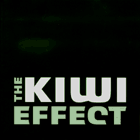 |
Green and Campbell: The Kiwi Effect. Wellington 2004.
It’s hip to be square. Lawrence Green and Jenny Campbell have
done something admirable: found out what makes successful New Zealand
business people tick. I was honoured that Lawrence approached me as
an interviewee and flattered I made it into so many chapters. DNA
Design did the cover—and a marvellous job of it, too. Check out
Lawrence’s company here;
and Jenny’s one here.
|
 |
Postrel: The
Substance of Style: How the Rise of Æsthetic Value Is Remaking
Commerce, Culture, and Consciousness. New York: HarperCollins
2003.
Style affects our choices more than we think, posits Virginia Postrel.
I haven’t bought this yet, but it’s an interesting thesis,
and I noticed I’m a footnote in it from my days helping out Visual
Arts Trends.
|
 |
Earls: Designing
Typefaces: Insight. East Sussex: Rotovision 2002.
The author, the editor of Typographer.com, had asked me for comments
on the topic of intellectual property protection for typefaces. I’ll
be checking this one out, to be sure.
|
 |
Jaffe and Nebenzahl:
National
Image and Competitive Advantage. København: Copenhagen Business
School Press 2001.
My colleagues Eugene Jaffe and Israel Nebenzahl, arguably the world’s
leading authors on country-of-origin effect, with the definitive
book on the subject. A pleasure to have lent a hand to these two
distinguished scholars.
|
 |
Sebastian: Digital
Design Business Practices, 3rd. ed. New York: Allworth Press
2001.
One of the most comprehensive books covering design principles and
the rights of those involved in the publishing industry. The earlier
editions came with an excellent reputation. The third edition of
this book, which includes chapters on web strategy, design and running
a practice, sees me quoted.
|
Selected papers
Gilboa: ‘Public
Diplomacy: the Missing Component in Israel’s Foreign Policy’,
Israel Affairs, October 2006, pp. 715–47.
It’s quite an honour to be cited by someone as well respected as
Prof Eytan Gilboa on branding and the international community. The paper
itself, on Israel’s national image and its 21st century deterioration,
makes for interesting reading.
Macrae: Brand
Transparency. Washington: Institute
of Brand Leadership 2002.
Chris Macrae’s excellent collection of writings about brand transparency,
edited by Dannielle Blumenthal, is one of the best in getting us to question
dogma and convention, breaking through the business world’s conditioning
and its use of falsehoods in the process. I appear in it once and am honoured
to be amongst such illustrious company. Hop over to Valuetrue.com
and learn more about Chris’s initiatives.
|

 A
conspiratorial financial system has severely damaged the reputation of
corporate America and global businesses. A
conspiratorial financial system has severely damaged the reputation of
corporate America and global businesses.
Accounting protocols fail to model the ways that organizations
actually create lasting value. Enforcing existing financial regulations
with greater vigour helps rebuild trust, but merely adds scaffolding to
a dilapidated structure.
World-class companies can sustain growth for their investors
while also learning to make the world a better place. They can do this
if their leaders champion the integrity of human issues as well as finding
simple ways to build value for all stakeholders. The solution, say the
signatories, is through branding, which reflects an organization’s truth
and its human aspects, and helps foster positive exchanges of value.
Excerpted from press release,
‘Financial measures have failed; branding is the way forward, say
experts’, August 5, 2002
Forms the basis of a 2003 book by signatories to the Medinge Communiqué
In his compelling closing piece, ‘The brand manifesto’,
Jack Yan expresses his concern that brands really are in trouble. He discusses
how brands were intended as a sort of shorthand for complex ideas and
to build trust among buyers. But, as trust fails, that shorthand is no
longer received as it was intended. He states that this is especially
true among those in Generation Y who are cynical about many brand propositions
and actively seek out responsible brands. For brands to continue to be
financial catalysts, Yan proposes a new eight-point brand manifesto. This
manifesto delivers what he believes are eight points, which if followed,
‘should guarantee a safe position for the brands of tomorrow’:
passion, focus, deliver what one
promises, make people happy, finance
is broken, brands are not ads, bring
humanity and create community.
Susan Nelson
Executive Strategy Director
Landor Associates
in the Journal of Brand Management, vol. 13, no. 1, 2005, pp. 89–90
|
|

